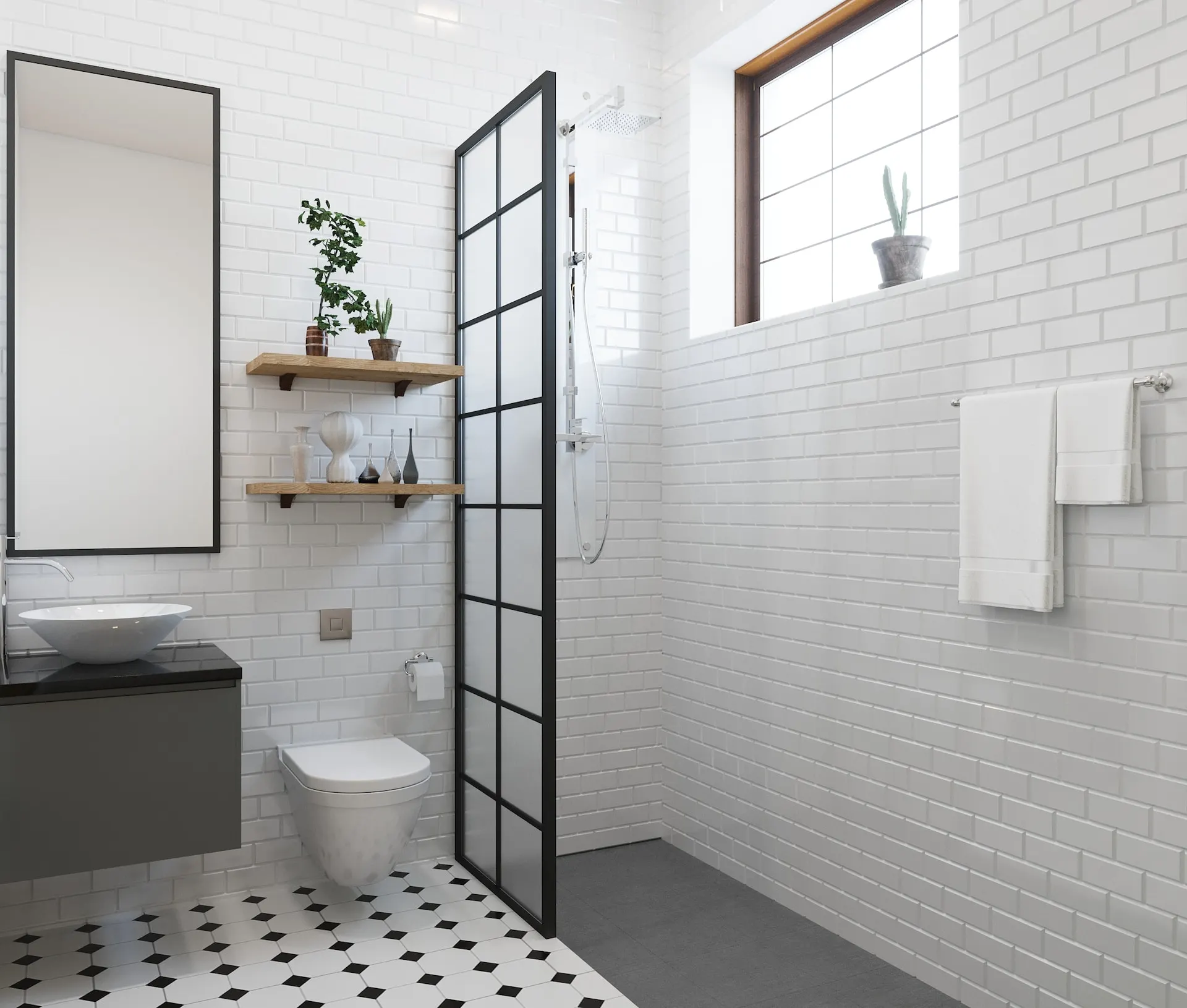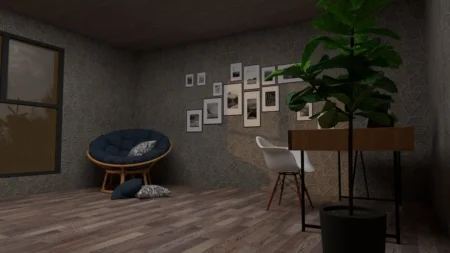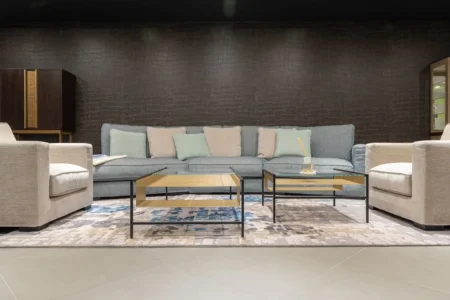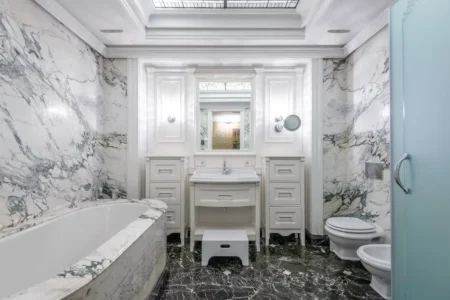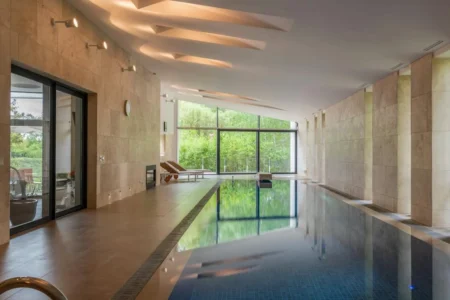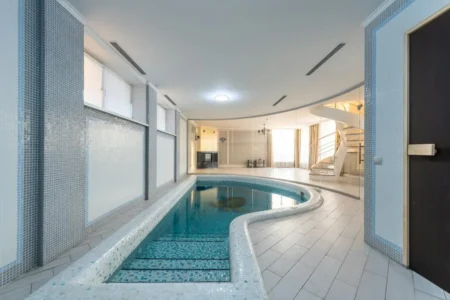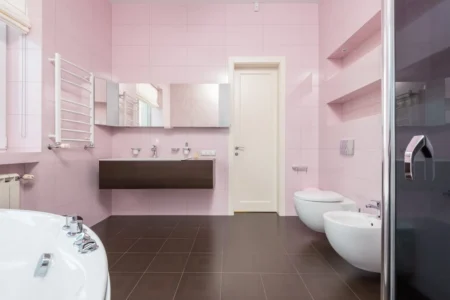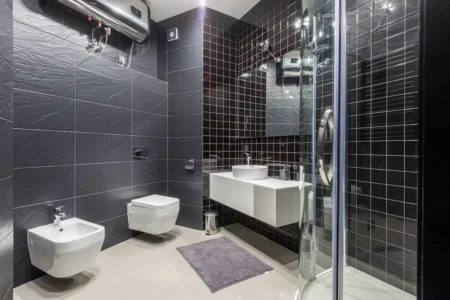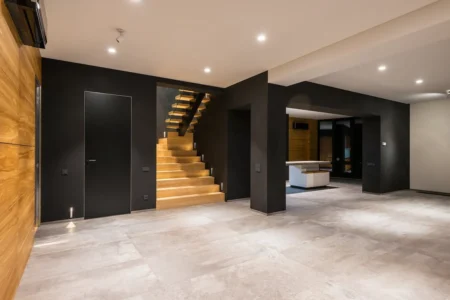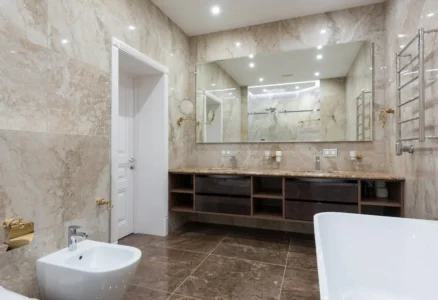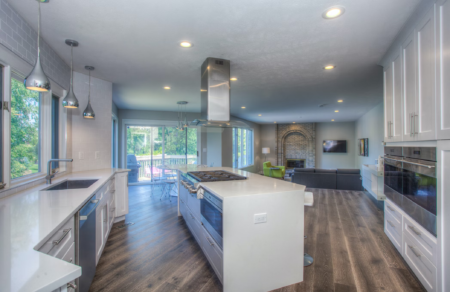The bathroom may be the smallest room in the house, but it has huge design possibilities. Changing up your bathroom’s tile layout may give it a whole new look and feel. There is a wide variety of tile options available, from the rustic appeal of natural stone tiles to the beauty of fireplace tiles and the practicality of laundry room tiles.
How to Create a Comprehensive Look with Different Tile Patterns
You should know how to make a unified design before you start working with tiles. Like any other creative form, tile design calls for some background knowledge and a healthy dose of imagination.
- Learn the Color Wheel The color wheel will be your closest buddy when choosing tile colors that complement one another. Contrasting colors, such as blue and orange or red and green, are found on opposite sides of the color wheel and make for a striking combination. However, adjacent hues, such as blue and green, have a calming effect.
- Strive for Harmony: It’s important to strike a balance between the many tile designs you choose. If you’re using a really strong or busy tile, it’s best to balance it out with a more understated option. Consider utilizing a plain, neutral tile on the walls if you choose with a bold, patterned tile for the floor.
- Toy with Proportion: Use tiles of varying sizes without hesitation. tiny bathrooms can benefit from the use of large tiles, while larger bathrooms can benefit from the use of tiny tiles to give detail and interest.
- Think About Why You’re Using That Room: Consider the room’s intended use while making tile selections. To create a relaxing atmosphere in the master bathroom, natural stone tiles are ideal, while in the kids’ bathroom, easy-to-clean laundry tiles are preferable.
- Don’t Ignore Texture: Texture plays a crucial part in our mental construction of three-dimensional space. A room with glossy tiles might feel brighter and bigger, whereas a room with matte tiles can feel more personal and homey.
The Benefits of Mixing and Matching Tiles in the Bathroom
It’s not all about style when it comes to bathroom tile combinations. There are real-world advantages that can improve your day-to-day existence as well.
- Individualization: By rearranging the tiles in your bathroom, you may make it seem exactly as you want it to. The appropriate selection of tiles may help you realize your design goals, whether you’re going for a sleek and contemporary feel or a warm and homey one.
- Use a variety of tiles to spice up your bathroom’s decor. Both the utility and resale value of your property might benefit from this.
- Reasonable: Tiles come in a variety of materials, each with its own set of benefits. Porcelain tiles, for instance, are hardy and resistant to water, making them ideal for the bathroom’s humid environment. Ceramic tiles, on the other hand, are less of a hassle to work with when it comes to cutting and laying down.
- Bathroom tile design that saves money by mixing and combining different tile styles. Some expensive tiles can be used as a focal point or accent on an otherwise budget-friendly design scheme.
- Finally, creativity may be stimulated by combining previously unrelated tiles in new ways. You have the freedom to try out new looks by mixing and matching various components.
5 Unique Ways to Mix Tiles in Your Bathroom
The design of a bathroom need not be boring. It only takes a little imagination to use different tiles together to make a room look completely different from the others.
- Making a feature wall with a variety of tiles is a great way to showcase your new tile combination. The wall behind the vanity or the wall of the bathroom’s shower both qualify. To grab people’s attention and inject some color, install a tile with a striking pattern. Use this as an accent while tiling the rest of your bathroom in neutral colors.
- Carpet tiles: One option is to make a “tile rug” for the bathroom floor. It’s possible to make it look like a rug is placed in front of a vanity or the tub by installing a certain sort of tile there. This is a great way to make your bathroom stand out from the crowd without breaking the budget by upgrading to more expensive tiles.
- Don’t feel constrained to a single color palette; instead, try combining different tile shapes. You may add depth and character to your bathroom by creating a visually intriguing pattern with a variety of forms. For a contemporary, geometric design, you might, for instance, combine rectangular subway tiles with hexagonal floor tiles.
- The difference between laying your tiles horizontally and vertically is significant. Bathrooms with vertical tiles can provide the illusion of height, while those with horizontal tiles might give the impression of width. If you’re looking for a way to give your bathroom a little something extra, try switching around the orientation in various spots.
- Think about employing a technique known as transitional tiling, in which you switch from one tile style to another in a seamless fashion. The resulting gradient look might be quite lovely and sophisticated for your lavatory.
Tips and Tricks for Choosing the Right Tile Colors, Shapes and Sizes
The challenge of finding the perfect tiles for your bathroom is real. Here are some suggestions that should help you decide wisely.
- Think About How Big Your Bathroom Is: Consider the bathroom’s square footage while making tile selections. Larger tiles are a good choice for a small bathroom since they provide the illusion of more floor space. However, smaller tiles, which may provide intricacy and interest, can be used in larger bathrooms.
- Consider Repairs: Not all tiles are created equal in terms of upkeep. Porcelain and ceramic tiles are low-maintenance alternatives to genuine stone tiles, which must be treated periodically to avoid water damage. Think about how committed you are to the upkeep of your tiles.
- Bathrooms may be made to seem larger by decorating with light colors. By reflecting light, tiles of a lighter hue, especially those with a glossy surface, may make a small bathroom appear bigger and brighter. If your bathroom is small or doesn’t get a lot of natural light, you might want to think about utilizing lighter colors.
- Avoid Avoiding Dark Colors: Contrarily, don’t be scared of blacks, grays, and other gloomy shades. Bathrooms with dark tiles have more visual interest and depth. They’re also a better option than white tiles for concealing dirt and stains.
- As was previously indicated, a one-of-a-kind appearance may be achieved by combining items of varying shapes and sizes. Try out several things till you find what you like most for your room.
Conclusion
There’s nothing wrong with being creative with the tiles in your bathroom. It’s a great way to put a stamp on your property while also making it more unique and valuable. The options are practically limitless, whether you want to make a tile rug, a gradient, or a feature wall.
Always keep in mind that harmony is the key to a great mash-up. Don’t be hesitant to use brightly colored or patterned tiles, but balance them up with plainer ones. Don’t be afraid to combine all sizes and shapes either, just make sure they complement one another.
Finally, remember to think about the size of your bathroom and the upkeep needed for certain tiles. A beautiful, long-lasting, and practical bathroom is within your reach with enough forethought and imagination. Buy Bathroom Tiles from Premium Tiles supplier in Sydney.
Is it time to get creative with your bathroom’s tile design? You can find the ideal combination of natural stone tiles, fireplace tiles, and laundry tiles. Have fun laying tiles!
FAQs
How do you mix and match bathroom tiles?
There should be a harmony of color, pattern, and texture when combining tiles for a bathroom. You should begin by deciding on a color scheme, such as monochromatic, complimentary, or comparable. The next step is to choose a wide range of tile textures and patterns that go with the established color scheme. A tile with a strong design may be used as a focal point on a wall or floor, while more understated tiles could be used in other areas. Keep in mind the bathroom's intended use and size while making tile selections.
How do you mix tile styles?
It's all about striking a balance and adding visual intrigue when mixing tile styles. For a one-of-a-kind feel, try mixing and matching different styles of tile, such as geometric contemporary with classic floral. You may also use a variety of tiles made from different materials, such as ceramic and natural stone, to create a more interesting design. The trick is to make sure the various aesthetics enhance one another rather than clash. It's recommended to stick to one dominant style for around 70% of the space and switch things up for the remaining 30%.
How do you match tile patterns?
The scale and orientation of the patterns must be taken into account while trying to find a matching set of tiles. Tiles with enormous, striking patterns should be balanced with tiles that have smaller, more delicate patterns. As an alternative, you may arrange one tile horizontally and the other vertically to provide visual interest. Patterns may be coordinated by selecting ones with complementary color palettes.
How do you arrange bathroom tiles?
The layout and size of your bathroom will determine how you should arrange the tiles. Laying huge tiles in a diagonal pattern might visually expand a tiny bathroom. Smaller tiles may offer intricacy and visual appeal to a big bathroom. Tiles can be arranged in a herringbone or chevron pattern to draw attention to certain parts of the bathroom. Make sure the floor tiles are slip-resistant and the shower tiles are water-resistant, for example, and don't overlook the practical features of your design.
